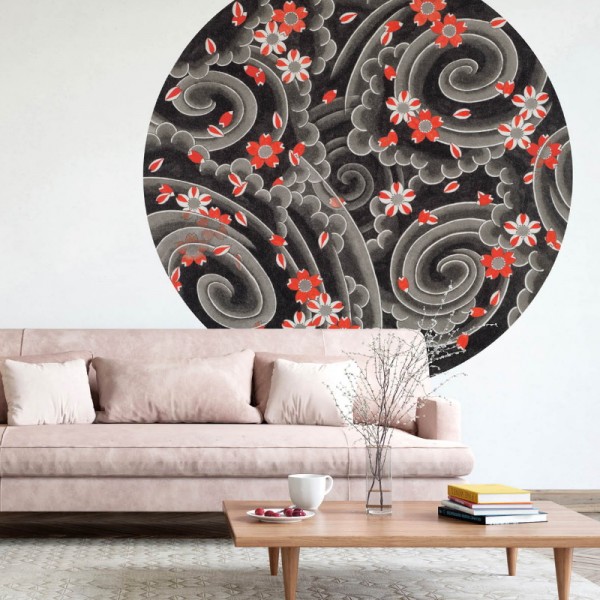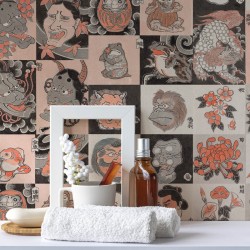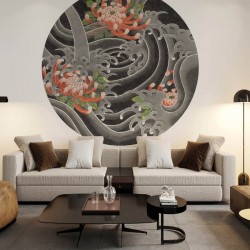The term “Sakura Fubuki” refers to the way cherry blossom petals are scattered by the wind, resembling a snowstorm. Cherry blossoms called Sakura in Japanese represent the beauty of the mind, good sense, the beginning of new things and the fragility of life from Buddhism teaching. It is written in the Kojiki (Records of Ancient Matters) and Nihonshoki (Chronicles of Japan) that Shinto goddess Konoha No Sakuyabime scattered seeds from the top of a mountain make cherry blossoms bloom.
- Specifications
Premium quality heavy duty 160 grs wallpaper with paper top layer and non woven backing; Colourfast and washable with a soft cloth; No wallpapering table necessary, glue is applied to wall; Fire rating USA ASTM E 84.10 EU B.s1, do.
- Size Description
Circle size: W 191 cm x L 191 cm = 3,65 m2
Circle size: W 75,2" x L 75,2" = 39,27 SqFt
NO REPEAT, NO MATCH!
-
Kensho II
<p>Kensho Ⅱ is a Japanese tattoo master using traditional “Tebori” methods and “Sashibo”instruments. He began apprenticeship with his master Takehisa Muramatsu in 2000. Asked by Takehisa Muramatsu if he would one day like to become a tattoo artist Kesho answered “yes Sensei!” From that point his tattooing career took off. It's very difficult to be given the chance to become a tattoo apprentice in Japan, especially within a traditional Japanese tattoo family.</p> <p>The Japanese apprentice system is very strict. Takehisa Muramatsu never taught Kensho directly - Instead, he watched his technique and studied his drawings for couple years until he received permission to practice Sashibo and Tebori - but not on customers. He trained on various items such as paper, radish, banana, pig skin bought in a supermarket etc. After much practice he ultimately tried the techniques on his own skin and studied what sort of ink mixtures (Japanese traditional tattoo artists make black ink for each appointment) worked and looked better, how much force he should apply for Tebori, etc...</p>


 EUR
EUR























